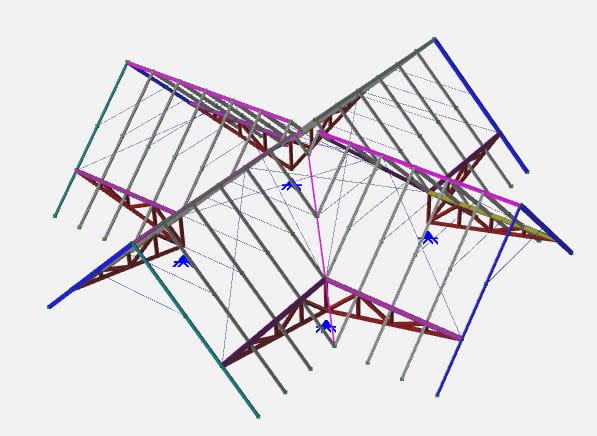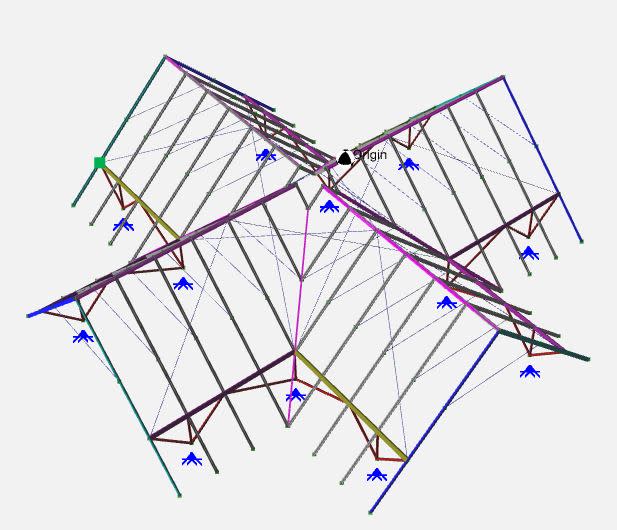Nisha1980:
You have 4- 3.2m long canti. gable/A-frame roof elements, the sub-systems in your whole roof system. There are 5 A-frames, with .8m spacing btwn. them in each canti. roof element sub-system. In your sketch, you show, with heavy lines, some saw toothed structure which appears to be the following: a truss like structure, its top chord might be the eave board of the A-frames; this eave truss appears to have a max. depth ‘d’ at A-frame #1 (at the columns), then its depth starts reducing as it moves out on the canti. and is ‘d/2’ at A-frame #2, and is zero at A-frame #3, and is ‘d’ at A-frame #4, and is zero again at A-frame #5, the end of the canti. sub-system.
My comment was intended to say, that that canti. eave truss is not particularly effective structurally. It would be better if it was deeper at the columns, and wasn’t saw toothed, but rather tapered up to zero uniformly on its way out to the end of the canti. sub-system. I don’t know what you intend this to be, or how it works. It does not appear to be a very helpful supporting structure in your whole roof system.
You could actually build the 4- 3.2m long canti. gable/A-frame roof elements, the sub-systems in your whole roof system, that is, A-frames #1-5 for each roof element and other parts, on the ground, and them lift them up onto their columns. Then, temp. support them out at their outer corners, out at the canti. ends and then, tie them together at the col. tops, and install some sort of ridge beam cross shaped frame with tensioning ability, valleys, etc. for the center roof. Finally, tension the two ridge lines so that the canti. ends are slightly above level.


